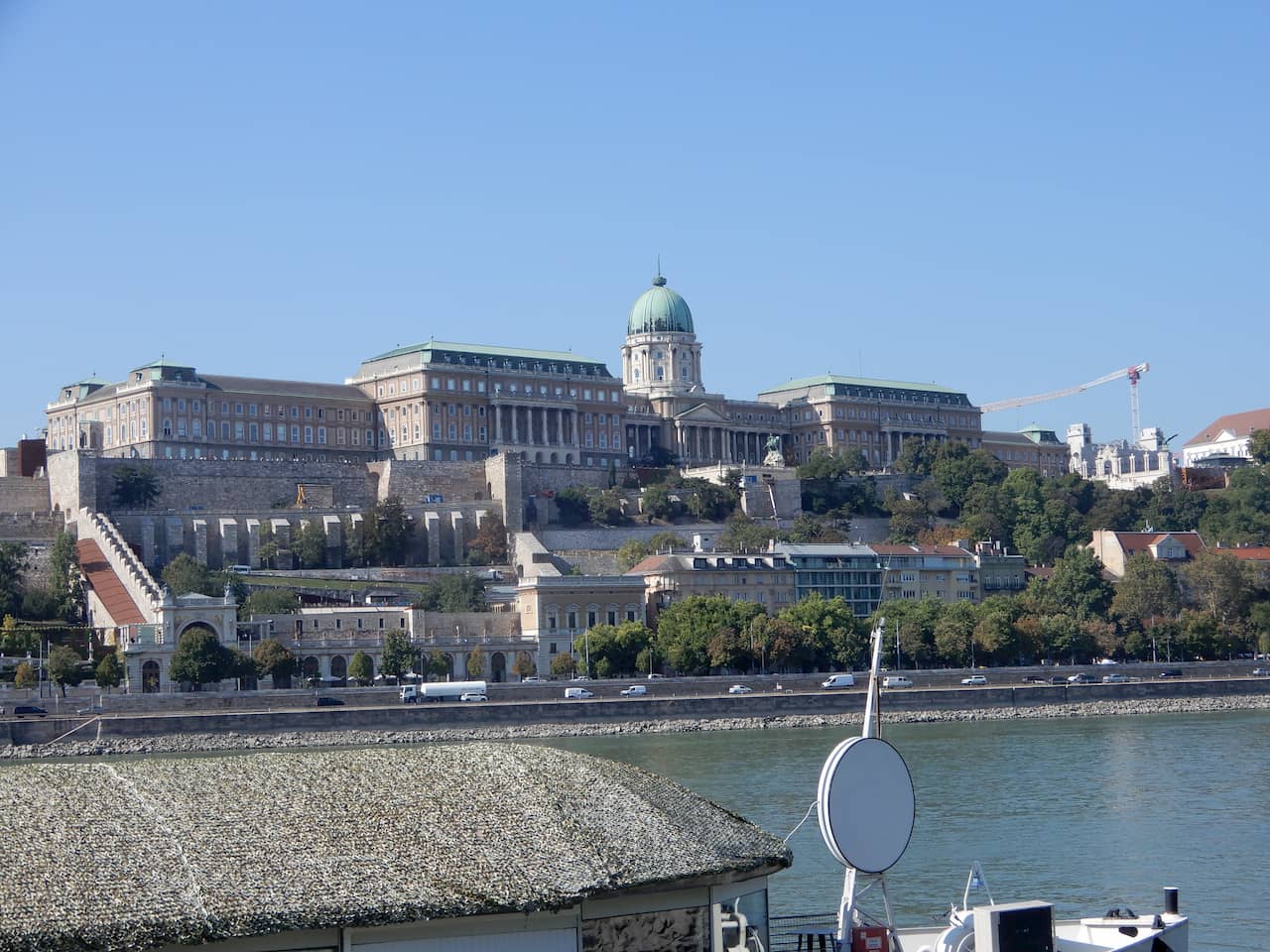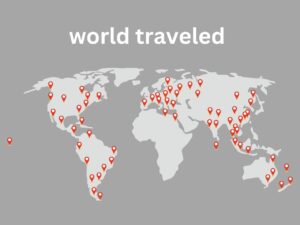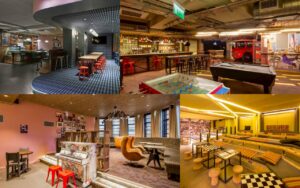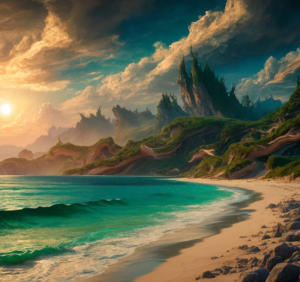Budapest is a city that offers a fascinating mix of history, culture and modernity, making it an attractive destination for travelers. Its majestic architectural elements, relaxing thermal baths and vibrant atmosphere make for a unique experience.
A little history of Budapest:
Originally founded by the Celts around 1 AD, the region was later annexed by the Romans, who founded the city of Aquincum (which today encompasses Budapest) here. The Magyars eventually invaded the region after being expelled from Bulgaria, founding the Kingdom of Hungary around 1000 AD. In 1361, the king built Buda Castle here, solidifying today’s Budapest as the capital and cultural center of the kingdom.
During the 16th century, Hungary was invaded by the Ottomans. Buda was captured in 1541, and the Ottomans occupied the region for almost 150 years. After the liberation of Buda by the Habsburgs in the late 17th century, the city began to recover.
19th century and the Budapest Merger:
In 1873, the cities of Buda and Pest were merged with the third city area, Óbuda (Old Buda), to form modern Budapest.
During World War I, Hungary suffered significant losses, and after the conflict, the Treaty of Trianon (1920) reduced the country’s size.
During the Second World War, Budapest was occupied by German forces and, later, by the Soviets. Hungary then entered a period of communist rule after the war.
In 1956, Budapest was the epicenter of the Hungarian Revolution, a popular uprising against the communist government.
With the collapse of communism in 1989, Hungary and Budapest embarked on a path of transition to a market economy and democracy. Hungary joined the European Union in 2004.
To help you make the most of your next trip, here are my top things to see and do in Budapest.
See my trip to Budapest.
Main attractions
1. Take a free walking tour
In my opinion, the best way to discover a new destination is to go on walking tours.
Today major cities have free walking tours which are an economical way to see the main sights, learn about the destination, meet new people.
They’re a quick and easy way to get an overview of a city, which helps you plan the rest of your trip. Budapest has several free tours available.
Search the internet and you will find some, I used freetour and it was great.
If you like it, leave a tip for the guide.
2. Relax in the thermal baths.
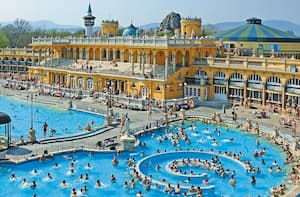 Budapest is known for its thermal baths, there are many of them around the city.
Budapest is known for its thermal baths, there are many of them around the city.
The most popular are the Széchenyi Baths in the City Park. With 18 swimming pools, it is the largest and most famous in Europe. The historic buildings that house the spa were built in 1913 and are a popular spot with locals and tourists alike.
Tips:
1 – Bring towels and slippers to avoid expenses, but you can rent them.
2 – If it’s from Friday to Sunday, it’s best to book a week in advance, as it gets quite crowded.
3. Visit Buda Castle
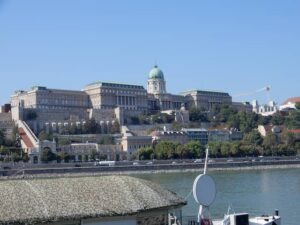
One of the most famous tourist attractions in Budapest.
Buda Castle is a complex built in the 13th century, however, the huge baroque palace that stands today was built between 1749-1769.
The palace was also looted by the Nazis and then by the Soviets during the Second World War.
The Budapest History Museum spans four floors of Buda Castle, with the most incredible views of the River Danube and the city of Pest.
It’s a must-visit for anyone wanting a more detailed look at the city’s 2,000-year past.
Fun fact: beneath the castle, Vlad the Impaler (colloquially known as Count Dracula) was trapped for 14 years.
4. Hungarian Parliament
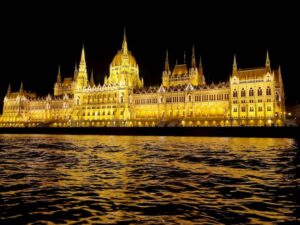
Built on the banks of the Danube in 1902, this is the country’s largest building and seat of the national assembly – covering more than 18,000 square meters.
It took almost 20 years to build after the three cities that make up modern Budapest (Buda, Pest and Óbuda) united in 1873.
5. Stroll along the Danube
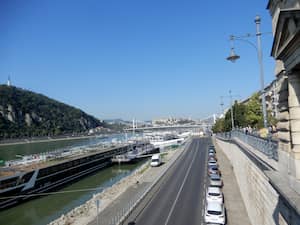
On the Pest side, the walk along the river is not very pleasant, as there are many places to board boats, the only thing to see are the “Shoes on the Danube”, which is a memorial to the Holocaust, representing the shoes left behind by the victims before they were shot and fell into the river.
On the Buda side it is much more pleasant, and the view of Pest is wonderful.
6. Great Municipal Market
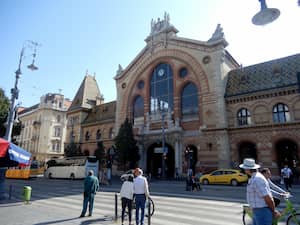
It is the largest and oldest indoor market in the country, built in 1897.
It has a variety of meats, roasts and sweets on the first floor, while the upper floor houses restaurants and souvenir shops.
There are many traditional restaurants to eat at and several souvenir shops, so be sure to walk around and explore the place.
7. St. Stephen's Basilica
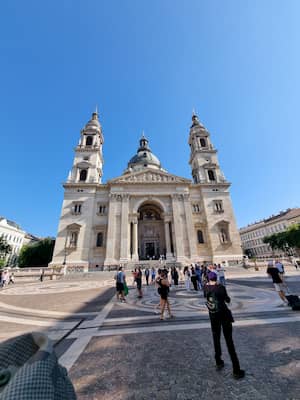
The imposing St. Stephen’s Church is the largest church in Hungary. Named after the first king of Hungary, the church consists of ornate architecture, beautiful artwork and is crowned by a huge dome.
It was completed in 1905, but took 50 years to build.
8. Dohány Street Synagogue
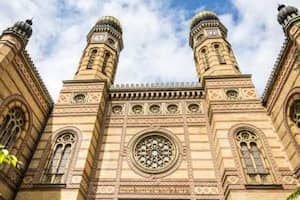
Also known as the Great Synagogue, this is the second largest synagogue in the world. Built in 1854, it offers guided tours where you learn everything about the construction of the synagogue, Jewish life in the city and much more.
9. Walk the trails of Mount Gellért
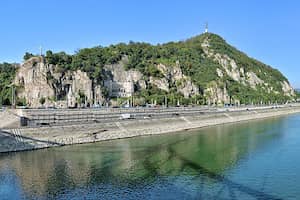
Gellért hill, south of Castle hill, covered in lush greenery, is a great place to watch the sunset and also walk through a forest.
Crossing the Elizabeth Bridge, just climb a staircase and go around a waterfall to reach the statue of Bishop Szent Gellért, with another 10 minutes of climbing you will reach one of the best points to see the city.
Following a little further you reach the Citadel, which is at the top, it was built by the Habsburgs after the failed Hungarian War of Independence.
Unfortunately I couldn’t see the Citadel, as it was under renovation.
10. House of Terror Museum.
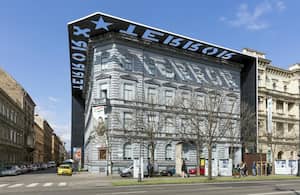
The building that houses this museum was used by the secret police and the Hungarian Nazi party during their reigns of terror. More than 700,000 Hungarians were killed or imprisoned by the Soviets.
The museum’s permanent exhibitions are spread over four floors and house all types of propaganda, weapons and informative multimedia displays. They also host temporary exhibitions (for information on these, see the Casa do Terror Museum website for the most up-to-date information).
11. Heroes Square
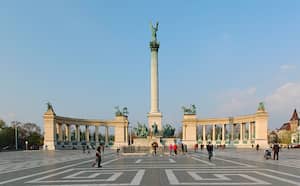
Heroes’ Square is the largest square in Hungary, with statues of Hungarian kings and other historical figures, including the seven chiefs who led the Magyars (modern Hungarians) in the 9th century.
The monument was built in 1896 to commemorate Hungary’s 1,000th birthday and originally included Habsburg monuments (as the Habsburgs ruled the country at that time).
The square is also home to the Millennium Monument. It consists of a tall central column, known as the Hero’s Column, with a statue of the archangel Gabriel at the top. The column is surrounded by two semicircular wings, forming an open square.
This monument was dedicated to those who gave their lives for Hungary’s independence.
Best time to visit Budapest
The best time to visit Budapest depends on what you are looking for.
My vision is to always be in a milder climate, lower costs and emptier attractions.
Therefore, the best time to visit Budapest is from March to May and from September to November. I visited Budapest in October.
These times of year are when the weather is mild and the city is not overcrowded. However, temperatures rarely exceed bearable levels.
July and August see average highs of around 20 degrees, while the average lows in January are mid-6 degrees.
The city is overcrowded in summer, despite it being the hottest and rainiest time of the year.
Winter (December to February):
Winter in Budapest can be cold and snow is common, but the city comes alive with Christmas celebrations and Christmas markets.
If you don’t mind the cold, you will find cheaper rooms and the landscape is very beautiful, providing some incredible photos.
Spring (March to May):
Spring is a pleasant time to visit Budapest, with cooler temperatures and blooming vegetation.
In May, two of the best food, beer and wine events in the city take place.
However, be prepared for rain, which will happen at any time of the day.
Summer (June to August):
Summer is the high season in Budapest. The days are long and hot, and there are a variety of outdoor events, festivals, and cultural activities. However, this is the busiest period, getting a room can be difficult so book as early as possible.
Furthermore, tourist attractions will be crowded and costs will be sky-high.
Autumn (September to November):
Autumn is my favorite season, the temperatures are mild, and the city is less crowded than in summer. The leaves begin to change color, providing a picturesque atmosphere.
Prices are much lower, with many offers.
How to get to Budapest
Budapest is a European city with a super efficient transport service.
The main means are
Plane:
Budapest Ferenc Liszt International Airport (BUD):
The main airport, located approximately 16 kilometers from the city center.
Connected to several European and international cities.
Transport from the Airport to the center can be done by Taxis, private transfers and public transport services (buses, express buses, and night buses)
Train:
Keleti Railway Station:
The most important train station in Budapest, connected to several European cities.
It offers domestic and international train services.
Bus:
Népliget International Bus Station is the main international bus station in Budapest.
I used it coming from Zagreb in Croatia and then took the metro, using the BudapestGO app to buy the ticket.
Bus services to several European cities.
Car:
Budapest is accessible by a well-developed road network.
Make sure you are aware of traffic regulations and toll requirements when driving.
I used the highways, as I went to Frankfurt by car.
Boat (Danube Cruises):
Budapest International Port:
Budapest is a popular destination for river cruises on the Danube River.
Cruise ships dock along the Danube near the city center.
Getting around Budapest
For me, the best ways to get around are always on foot and public transport.
That’s why I always stay close to attractions and/or public transportation.
The city’s neighborhoods are easy to navigate and you can admire the historic architecture as you walk.
Budapest is a very large city and often to save time or walking it is good to use the public transport system which is very efficient.
I used the BudapestGO app, which makes purchasing tickets very easy, everything is on your cell phone, quick and easy.
On foot
On foot it is possible to admire the life of the city’s population while seeing its main attractions. Many of the city’s main tourist attractions are within walking distance of each other. When you need to go further afield, there is a very efficient metro and bus network.
Car
Budapest’s traffic is very intense and rush hour is very slow.
If you have a car for some reason, it is best to leave it in the parking lot and use public transport.
In addition to being cheaper, there is no stress of traffic and finding a place to park.
Public transportation
Budapest’s transport system offers cheap and efficient bus, tram, train, funicular and metro services throughout the city. Make sure you validate your tickets before getting on the metro and getting on buses and trams, as plainclothes inspectors can appear out of nowhere and the fines for not validating them can be quite hefty.
Buy your tickets in advance at a metro station or newsstand, as it is not guaranteed that you will find them on sale on board.
Today there is the BudapesteGO app that makes purchasing tickets much easier.
Taxi
Taxis are widely available on the few occasions when public transport is not convenient. Make sure you use a legitimate taxi – one with a yellow license plate, a yellow taxi sign, and an identification badge on the dashboard.
I didn’t use any of them, as in addition to many more cars and public services, they are super efficient.
What is the best neighborhood to stay in Budapest?
I always keep the location in mind when choosing where to stay, as it influences the way I get to know the place.
For me the location must have it.
- Being close to public transport.
- Being within walking distance of the main attractions.
- Easy to get to and from, if possible by walking.
- Better transportation cost.
- Be no more than 3 km from the city center and/or attractions.
With that in mind, the best place to be in Budapest is Pest.
The Pest side of the city is busy and busy, being the commercial center of the city, it is where you will find most accommodation, as well as some of the main popular historical and religious attractions. In addition, of course, it houses a variety of shops and restaurants.
It is the heart of nightlife and the liveliest side with the most attractions of the city.
District V
Accessible via metro lines M1, M2 and M3.
District V comprises two neighborhoods: City Center (Belváros) and Leopold Town.
The historic architecture of the city center, sophisticated shops, hotels and numerous restaurants and tourist cafes (especially Café New York), make this one of the most visited itineraries.
In addition, of course, visit the Elizabeth Bridge, visit the Great Market Hall and stroll along the Danube Promenade, a riverside walkway lined with sculptures that crosses the two neighborhoods of District V.
North of the city center is pleasant, Leopold Town. Full of office buildings and government ministries, it’s not the most interesting neighborhood for tourists. However, it is within sight of Budapest’s most emblematic bridge, the chain bridge, with two unmissable tourist attractions: the Hungarian Parliament and St. Stephen’s Basilica.
District VI
Accessible via metro lines M1 and M3
East of Leopold Town is District VI. Here you will find Andrássy Street, one of the most prestigious thoroughfares in Budapest, which is also the main avenue of the district’s only neighborhood, Teresa Town. Beautiful buildings and boutiques line this popular street. Additionally, Teresa Town offers several hostels and budget hotels, as well as popular tourist spots like Heroes’ Square, the Hungarian State Opera, and the House of Terror Museum.
District VII
Accessible via metro line M2.
The main reason to head south from District VI to District VII and its Elizabethtown area is to see its main attraction, the notable Dohány Street Synagogue.
Today, Elizabethtown continues to be where the majority of Budapest’s Jewish residents live.
I stayed in this district near Budapest-Keleti station.
Where to stay.
Over time, the way we travel and stay changes.
I’ve been to 5-star hotels and hostels with shared rooms for up to 10 people.
Today I have been looking for a new way to stay that is a mix of Airbnb and hotels.
They are “apartments”, small or not with the infrastructure to cook, so in addition to having better privacy, they save on the cost of meals and I am not paying for infrastructure that I do not use, such as a swimming pool, gym, etc.
They are classified between economic and medium, but with very significant savings.
I explain better here.
Economic :
Silver Hotel – This three-star hotel is very close to the Avenida Andrássy shopping street. The rooms are basic but light and airy, and the beds are comfortable. There are plenty of outlets as well as desks in case you need to work. The tasty continental breakfast has a good variety of food, but the real highlight is eating on the balcony and enjoying the view over the city.
Average:
Mirage Medic Hotel – The rooms here may look a little dated, but they are clean, spacious, and the beds are comfortable. There is a table and an electric kettle and the shower pressure is also good. There’s a free, simple breakfast of bread, coffee, and cereal every morning. The main attraction, however, is this hotel’s proximity to Széchenyi, Budapest’s most popular thermal spa.
I stayed in a two-bedroom apartment for 4 people limehome Budapest Mosonyi u
For EU 90.00 per day. 5 minutes walk from Budapest-Keleti station and 30 to 40 minutes from main attractions.
Furthermore, we save a lot on food.
Luxurious:
W Budapest – I really liked the spacious and colorful rooms here. Each had a unique interior design, with different colors and styles, including wooden and parquet floors. The bathrooms are huge and beautiful, with beautiful tiles and showers with perfect water pressure. The salon has a chic retro feel and since it recently opened everything is fresh and new. There is an indoor pool too.
Gastronomy in Budapest
In Budapest the cuisine is very varied, due to the large concentration of foreigners.
However, you can find some typical dishes.

The most famous is Goulash:
It is a stew of meat (usually beef), potatoes, peppers and spices, such as paprika, which gives the dish its characteristic color.

Paprikash:
Another popular dish that highlights paprika. It can be prepared with chicken or pork, cooked with onion, paprika, tomato and cream.

Lecso:
A summer dish, Lecso is a mixture of peppers, tomatoes, onions, and sometimes sausage or eggs, all cooked together.

Halászlé (Fish Soup):
A spicy fish soup, usually made with various types of freshwater fish, paprika and vegetables.
Tipical drinks:

Pálinka:
This is a typical Hungarian fruit brandy, usually made from fruits such as apricots, pears, cherries or plums. She is quite strong.
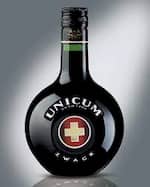
Unicum:
Uma erva amarga, licor de ervas produzido desde o século XIX. A receita é secreta e inclui uma mistura de mais de 40 ervas. Pode ser consumido como aperitivo ou digestivo.

Bor (Hungarian Wine):
Hungary has a long winemaking tradition, and you will find high quality local wines.

Sör (Hungarian Beer):
Hungary also produces local beers that are worth trying.
2 day itinerary in Budapest
In my experience, any city can be well visited in two full days.
Depending on the type of visit you want to make.
I am doing the visits on this itinerary, not counting the paid entrance fees, as there are usually a lot of queues and it depends a lot on the style of your trip.
For those who really like museums, climbing monuments, etc., you should add another day or reduce the number of attractions to be visited.
You can also spend a little more to avoid queues, as many attractions have this option.
Depending on where you are staying and how much you like to walk, using the metro in Budapest may help. You get off at the station closest to the attraction and walk a little.
However, the metro works better in Pest, for Buda it is best to use the bus.
I recommend downloading the BudapestGO app, which makes purchasing tickets and seeing which transport to use very easy.
First Day: Attractions in Buda
Start early, at the Central Market. It is close to Fovam ter station (line 4).
It is the largest and oldest closed market in Hungary, built in 1897, with many traditional restaurants to eat and several shops with typical souvenirs.
Leaving the market on the left you reach Ponte da Liberdade, which was built between 1894 and 1899 and underwent complete restoration after the Nazi destruction in the Second World War.
The highest pillars were decorated with large bronze statues of a bird, the Turul, a type of falcon from Hungarian mythology.
From where you have a great view of the Danube River.
For hiking lovers, it’s now time to climb Mount Gellért, which has the Citadel at the top, where the Statue of Liberty is located.
Unfortunately it was closed for renovations, but the view of Pest is spectacular.
After walking through the park, head towards Buda Castle.
For those who don’t want to walk and get off and take the bus to Buda castle
Going up to the castle is very easy, as there is just a small climb and then an escalator and elevator.
Buda Castle is quite large, it takes at least 2 hours to tour the entire complex.
In addition to a stunning view of the Parliament and the city of Pest, we also have Matthias Fountain, Old Carmelite Monastery and Sándor Palace, Matthias Church, Holy Trinity Square, Fisherman’s Bastion and the Equestrian Statue of King Stephen I, among others.
The descent was along the path above the castle funicular, in front of the chain bridge, continuing the path to the left following the Danube. There is an obligatory stop at Batthyany ter station to take a photo in front of the Hungarian Parliament.
Stop to rest, as there is a shopping mall with restaurants, etc.
For those who are already tired, take the subway somewhere.
If not, continue to the Ponte Margarida which gives access to Ilha Margarida, which is a very beautiful and wooded park.
The island is 2.5km long, which can be covered on foot, with the tourist train, rented bicycle or rented electric car
The park had a music and typical food festival, where I had lunch.
In addition to the spectacular views of both sides of the city, the park has many leisure areas, such as: a swimming pool with water slides, gardens, a small zoo and a dancing fountain.
Every hour the water jets from the fountain come out “dancing” to the rhythm of the music being played.
Depending on your pace, it might already be late afternoon.
Leaving the park, cross the bridge to Pest and you will be at the Hungarian parliament, which is about 20 meters away on the banks of the Danube and continuing straight ahead is the Kossuth lajos ter station (M2).
At night
The area, parallel to the Danube, from the Central Market to Elizabeth Square, where the Ferris Wheel is located, is buzzing at night, with lots of restaurants, bars, shops and everyone walking around.
Luckily, the Budapest Oktoberfest was taking place.
If you’re tired, there are several metro stations in this area.
See the Budapest metro map.
Second day: Pest attractions.
The second day is much calmer, as the attractions are very close to each other
Start at the Hungarian National Museum, leaving the museum, about 400 meters to the right you will be at the Dohány Street Synagogue, continuing to the right another 300 meters you will be in Elizabeth square where you will find the Ferris wheel, many shops, restaurants etc.
Now continuing on Bajcsy-Zsilinszky street, another 200 meters will take you to St. Stephen’s Basilica
Leaving the basilica on your right and continuing straight ahead for another 400 meters you will reach Praça da Liberdade.
This square has several monuments such as the Soviet War Memorial, a statue of Ronald Reagan, the 1848 Revolutionary Memorial, among others.
At the end of the square, turning left will lead to Kossuth Lajos Square where the Hungarian Parliament is located. For those who want to visit parliament, it is a good time, but you should have planned it already, as there may be queues and you will need to buy a ticket.
Follow the official website of the Hungarian Parliament.
If you didn’t visit yesterday, here you have a new opportunity to see the Shoes on the bank of the Danube
Stop for lunch and rest
This area has many restaurants and cafes, a good time to eat and rest for a while.
Now refreshed by rest and well fed, it’s time to return to St. Stephen’s Basilica and head to Andrassy Street and soon reach the Hungarian State Opera.
Andrassy Street is very beautiful, tree-lined and full of old mansions and lots of shops.
The next attraction is almost 3 kilometers away or 6 metro station. I prefer to take the subway, as it leaves more time to enjoy it, but it’s your choice.
The heroes’ square where we have several statues pay homage to historical Hungarian characters such as Saint Stephen I of Hungary, whose image is on the left side of the monument, as well as the leaders of the seven founding tribes of Hungary, who are represented in the central column of the Millennium monument , also the Budapest Museum of Fine Arts etc,
And to end the day, relax in the city park, which is just behind the square.
Inside the park you will find several interesting places, including the zoo, a small amusement park, the Széchenyi Spa and the Vajdahunyad Castle.
How much does it cost?
3 styles and their costs
Backpacker:
Stayed in hostels using shared dormitories, eating your own food and/or cheap local restaurants, using local transport, exploring the city on foot and taking tours for free or cheaper.
Daily spending: from US$ 40.00 to 60.00 per day
Intermediary:
Stay in hostels/budget hotels in private rooms, eat in a medium-sized restaurant, go to the main paid attractions, use some taxis and Uber.
Daily spending: US$100.00 to 140.00 USD per day.
Luxurious:
Stayed in the best hotels, go to all the attractions, hire more sophisticated packages such as use of a helicopter, etc.
Daily spend: US$220.00 and above per day
